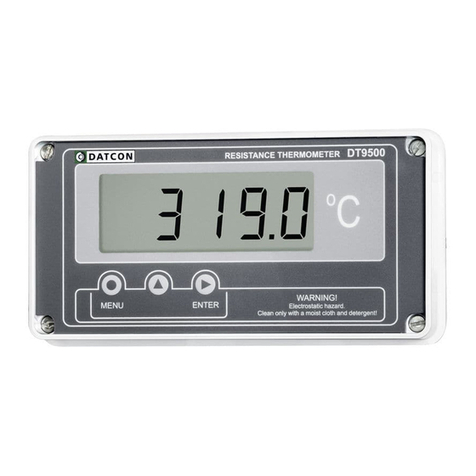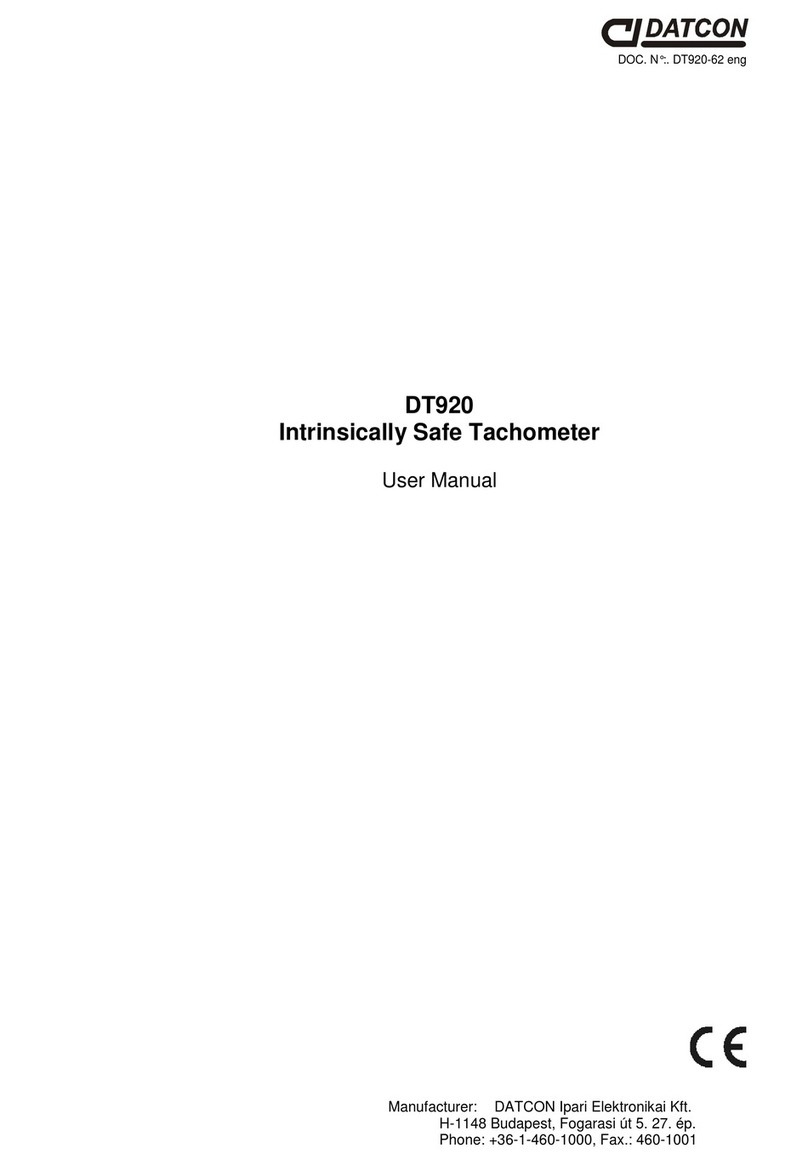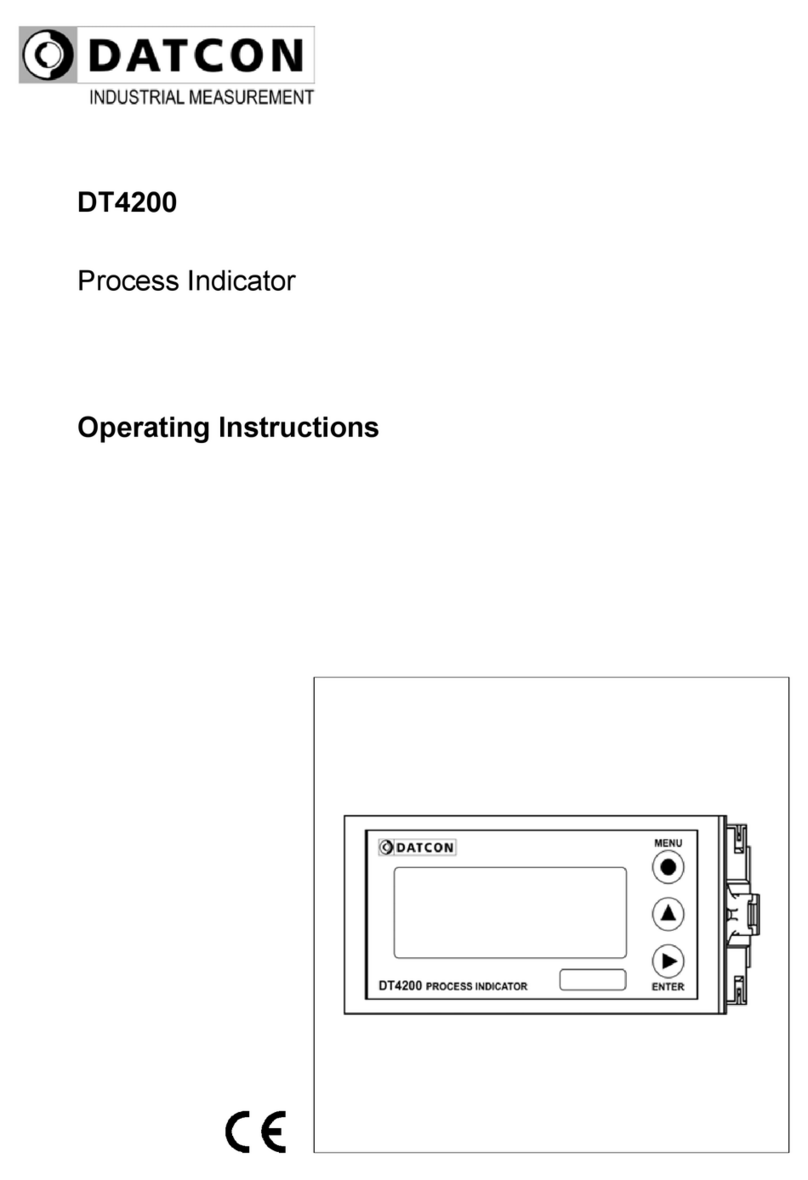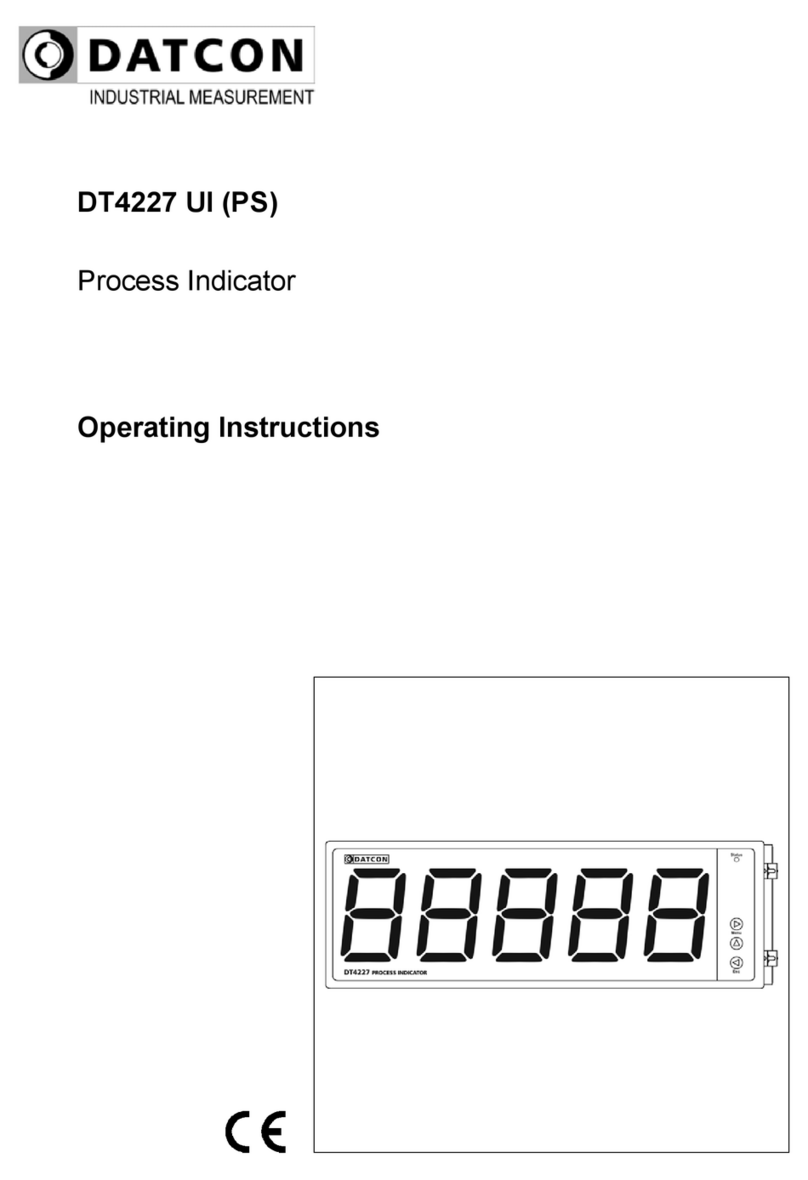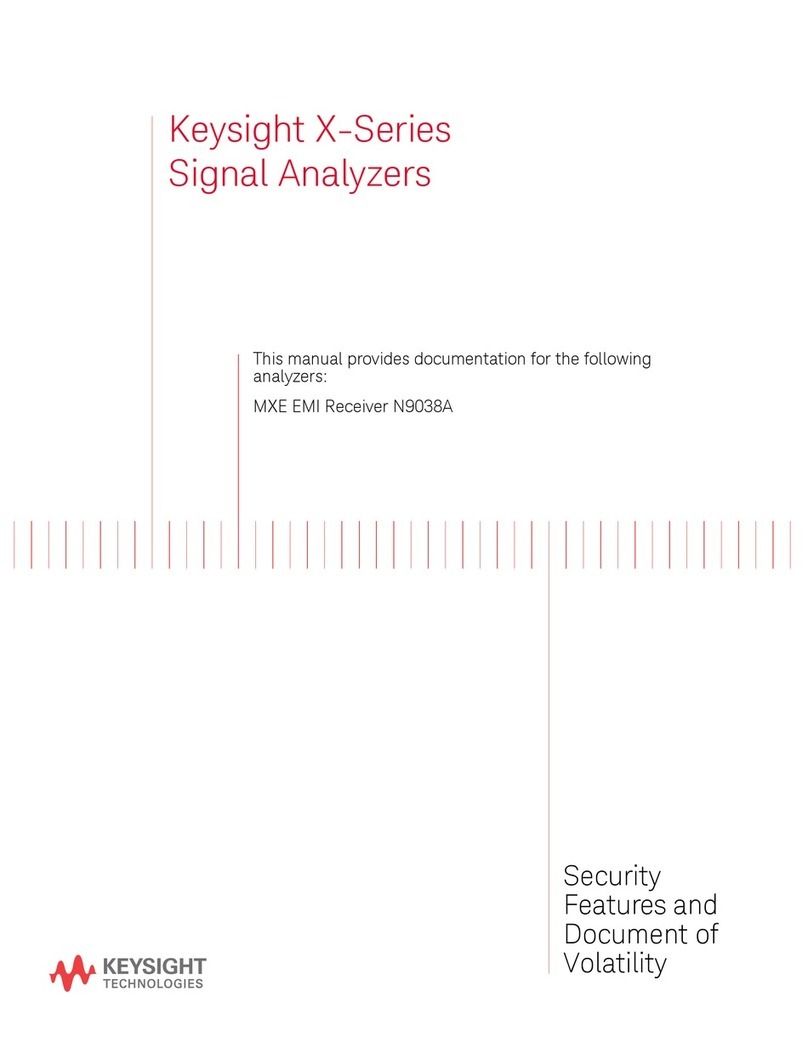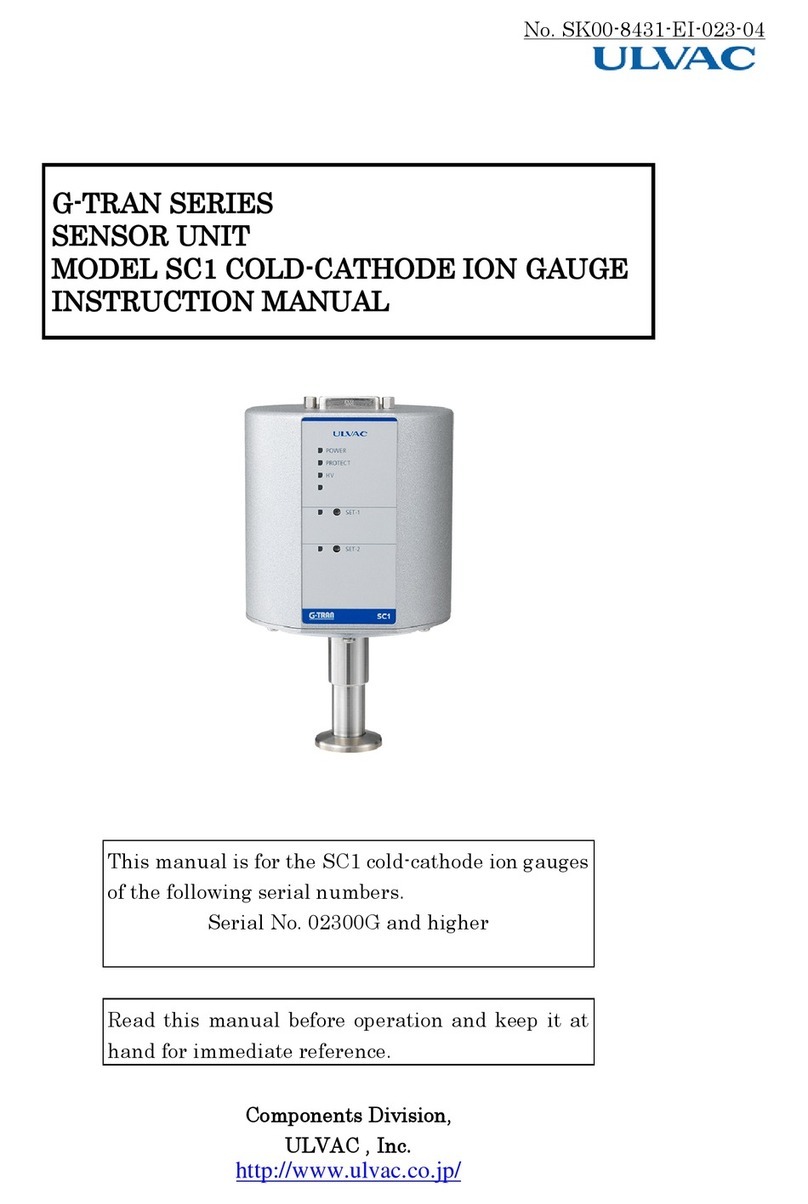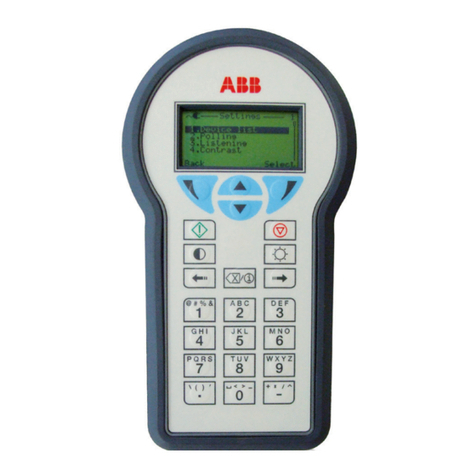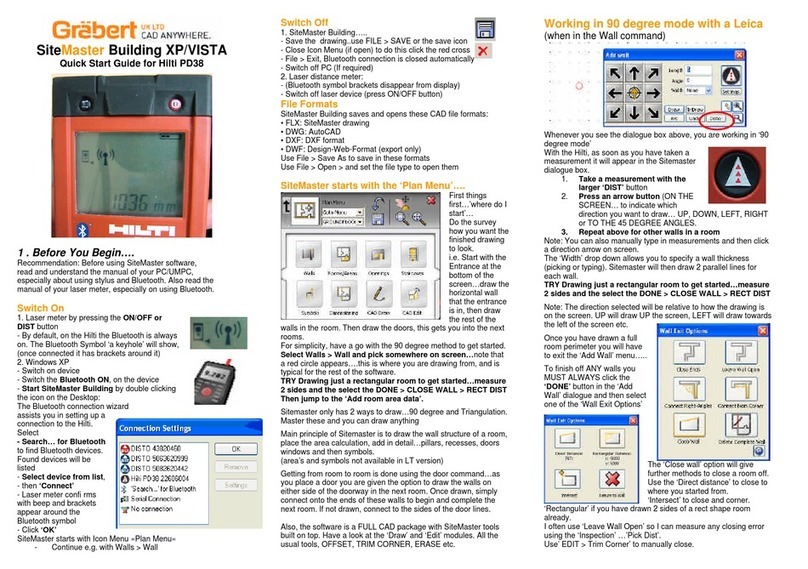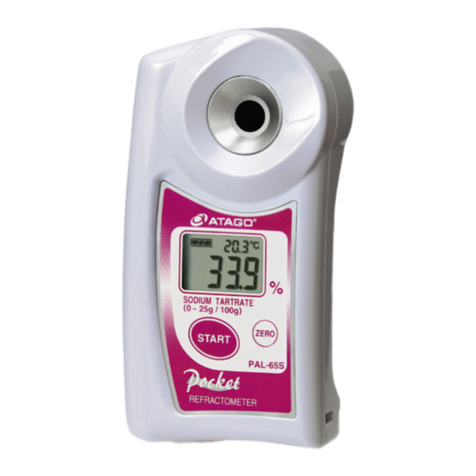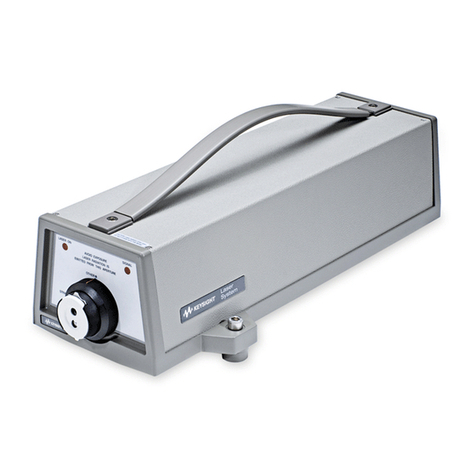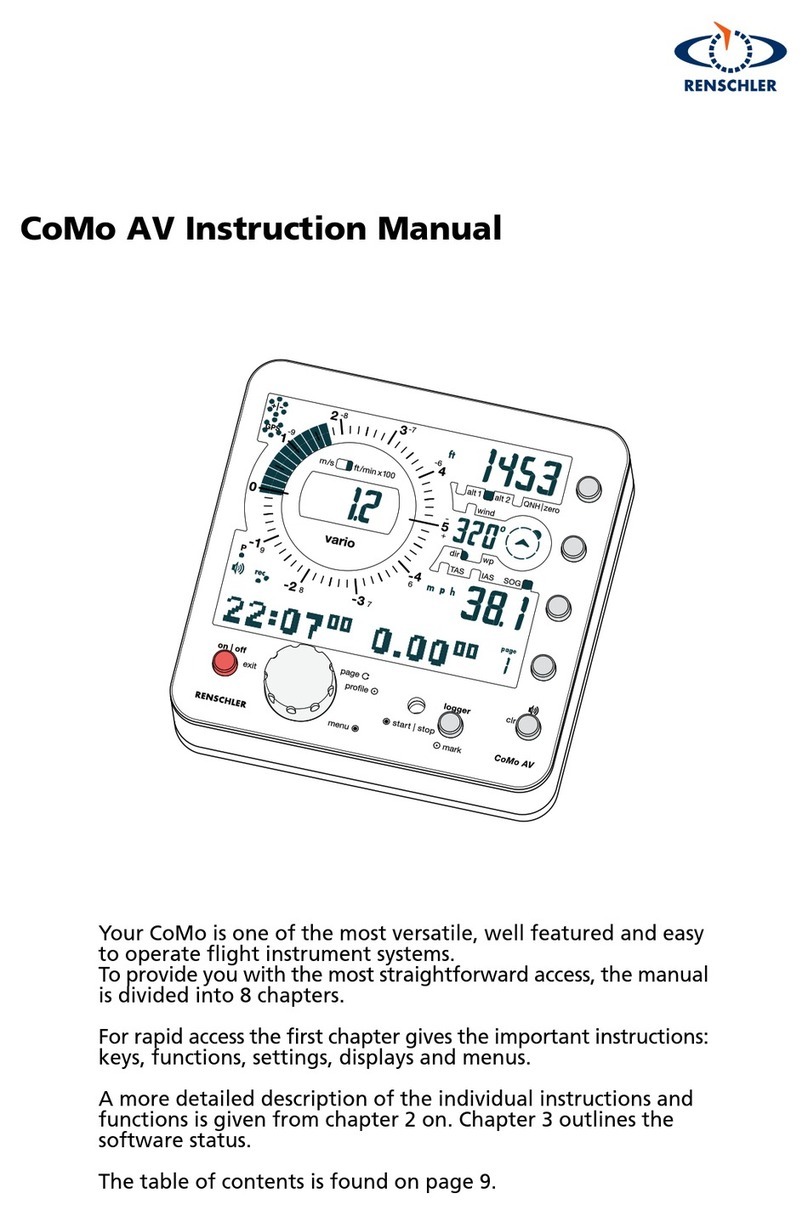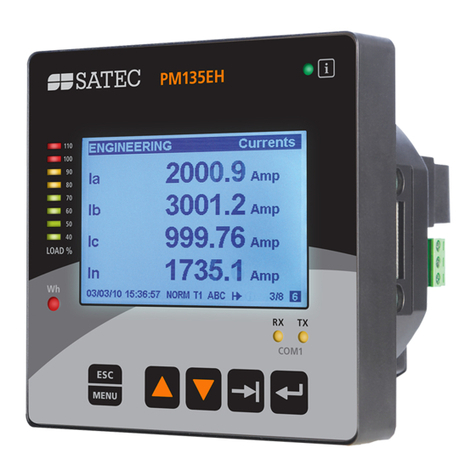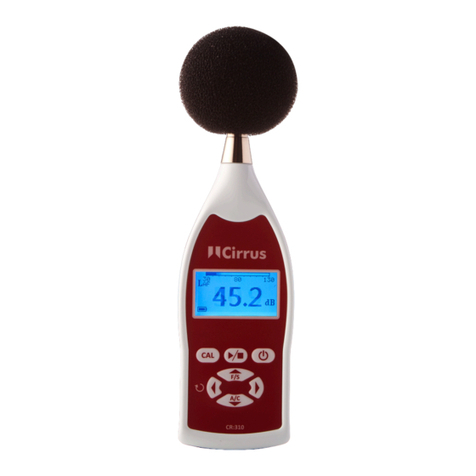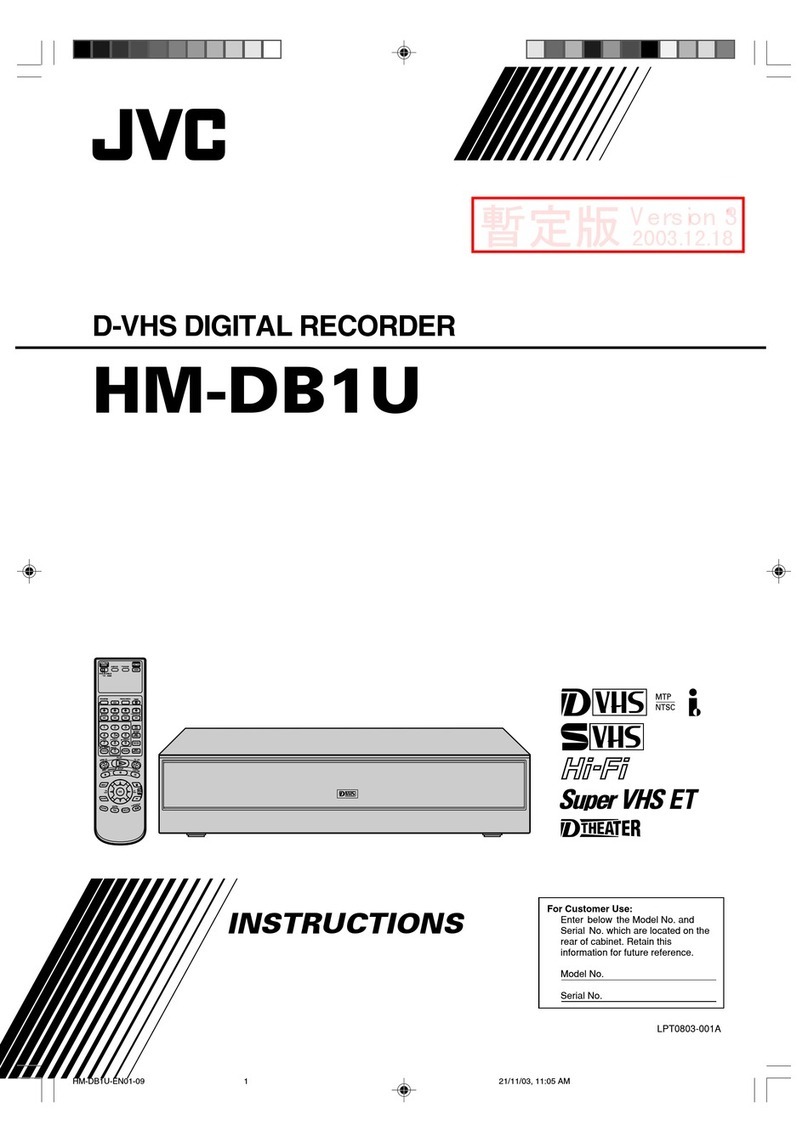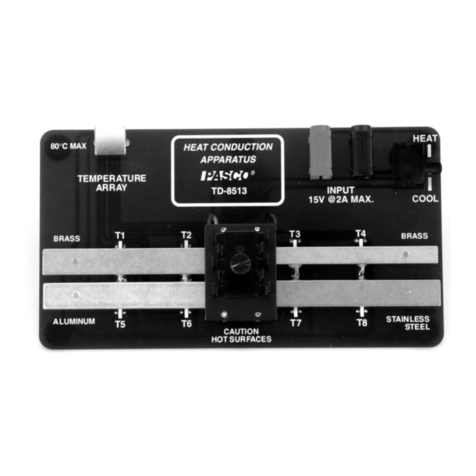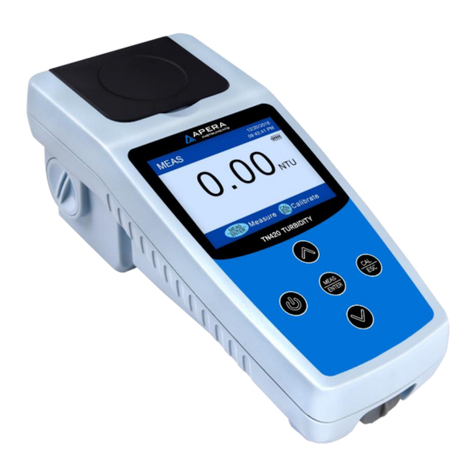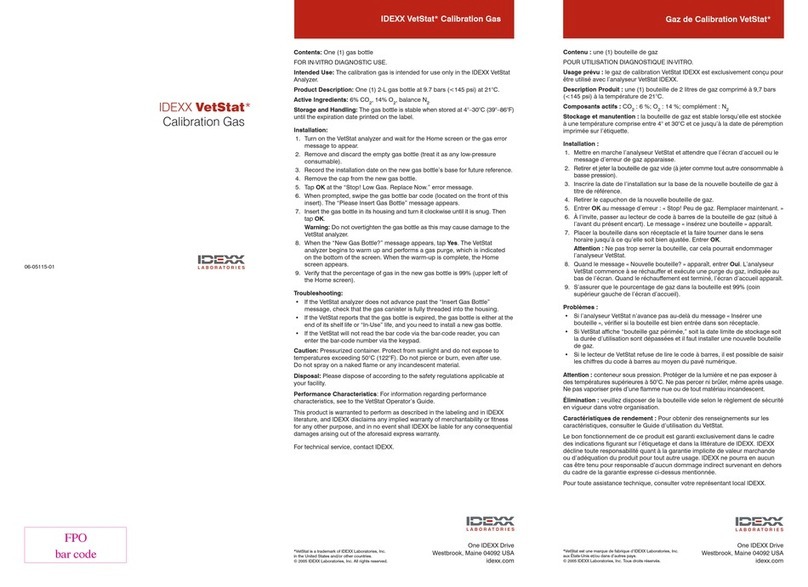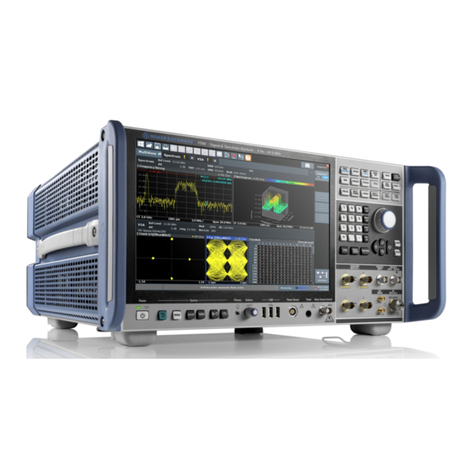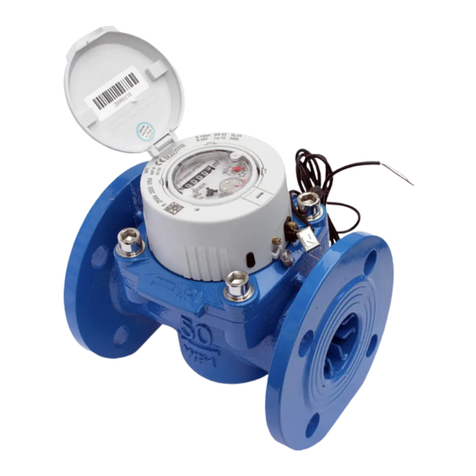Datcon DT4220 E Series User manual

DT4220 E xx xx xx (PS)
Process Indicator
Operating Instructions

DT4220 E
220180619-V0
Contents
1. About this document..............................................................4
1.1. Function...............................................................................................4
1.2. Target group........................................................................................4
1.3. Symbolism used .................................................................................. 4
2. For your safety........................................................................5
2.1. Authorized personnel...........................................................................5
2.2. Appropriate use ...................................................................................5
2.3. Warning about misuse......................................................................... 5
2.4. General safety instructions ..................................................................5
2.5. CE conformity......................................................................................5
2.6. Environmental instructions...................................................................5
3. Product description................................................................6
3.1. Delivery configuration .......................................................................... 6
3.2. Type designation .................................................................................6
3.3. Operating principle ..............................................................................7
3.4. Adjustment ..........................................................................................9
3.5. Display, indicators ...............................................................................9
3.6. Storage and transport.......................................................................... 9
4. Mounting ...............................................................................10
4.1. General instructions........................................................................... 10
4.2. Main dimensions of the instrument .................................................... 10
4.3. Mounting............................................................................................ 11
5. Connecting............................................................................13
5.1. Preparing the connection................................................................... 13
5.2. Connecting the mains........................................................................ 15
5.3. Connecting to active current transmitter ............................................ 17
5.4. Connecting to passive current transmitter.......................................... 18
5.5. Connecting to voltage transmitter ...................................................... 19
5.6. Connecting the limit relay outputs (option)......................................... 20
5.7. Connecting the analogue output (option)........................................... 21
5.8. Connecting the RS-232 MODBUS communication output (option) .... 22
5.9. Connecting the RS-485 MODBUS communication output (option) .... 23
5.10. Connecting the transmitter supply (TS) output (option).................... 24
5.11. Final steps ....................................................................................... 24
6. Display and manual controls ...............................................25
6.1. The first start-up ................................................................................ 25
6.2. Characters and mnemonics appearing on the display ....................... 26
6.3. Functions of the push-buttons during measurement .......................... 29
6.4. indicators ........................................................................................... 30

DT4220 E
20180619-V0 3
7. Setting-up..............................................................................31
7.1. Functions of the push-buttons during navigation in the menu ............ 31
7.2. Typing the code (password) in........................................................... 32
7.3. The menu structure ........................................................................... 33
7.4. The menu structure (detailed description).......................................... 34
7.5. Menu item 01: Display brightness...................................................... 35
7.6. Menu item 02: Input selection............................................................ 35
7.7. Menu item 03: Decimal point position ................................................ 36
7.8. Menu item 04: Low value of scale...................................................... 36
7.9. Menu item 05: High value of scale..................................................... 37
7.10. Menu item 06: Enable / disable displaying the leader zeros ............ 37
7.11. Menu item 07: Rounding displayed value ........................................ 38
7.12. Menu item 09: Display refresh time ................................................. 38
7.13. Menu item 10 and 11: Setting limit outputs ...................................... 39
7.13.1. Setting the operating mode........................................................... 40
7.13.2. Low limit value .............................................................................. 41
7.13.3. Hysteresis of the limit output......................................................... 42
7.13.4. High limit value ............................................................................. 43
7.13.5. Limit output hold mode ................................................................. 43
7.14. Menu item 14: Limit output state display mode................................ 44
7.15. Menu item 16: Analog output signal setting ..................................... 45
7.16. Menu item 17: Assignment analog output low (start) value to display
value (scaling) .......................................................................................... 46
7.17. Menu item 18: Assignment analog output high (end) value to display
value (scaling) .......................................................................................... 46
7.18. Menu item 19: MODBUS communication settings ........................... 47
7.19. Menu item 20: Tests ........................................................................ 47
7.20. Menu item 21: Changing the user code ........................................... 48
7.21. Menu item 22: Changing the supervisor code.................................. 48
7.22. Menu item 23: Resetting the default settings ................................... 49
8. Fault rectification..................................................................50
8.1. Fault finding....................................................................................... 50
8.2. Repairing ........................................................................................... 50
9. Dismounting..........................................................................51
9.1. Dismounting procedure...................................................................... 51
9.2. Disposal............................................................................................. 51
10. Appendix .............................................................................52
10.1. Technical specifications................................................................... 52
10.2. MODBUS registers .......................................................................... 55
10.3. Application example ........................................................................ 56

DT4220 E
420180619-V0
start 1. About this document
1.1. Function
This operating instructions manual has all the information you need for
quick set-up and safe operation of
DT4220 E xx xx xx (PS).
Please read this manual before you start setup.
1.2. Target group
This operating instructions manual is directed to trained personnel.
The contents of this manual should be made available to these
personnel and put into practice by them.
1.3. Symbolism used
Information, tip, note
This symbol indicates helpful additional information.
Caution, warning, danger
This symbol informs you of a dangerous situation that could occur.
Ignoring this cautionary note can impair the person and/or the
instrument.
•List
The dot set in front indicates a list with no implied sequence.
1
Sequence
Numbers set in front indicate successive steps in a procedure.
/
Parting
Parting set in between the elements of a list.
It's meaning: only one element can be chosen from the list.

DT4220 E
20180619-V0 5
2. For your safety
2.1. Authorized personnel
All operations described in this operating instructions manual must be
carried out only by trained and authorized specialist personnel. For
safety and warranty reasons, any internal work on the instruments
must be carried out only by DATCON personnel.
2.2. Appropriate use
The DT4220 E Process Indicator enable process variable 0-20 mA, 4-
20 mA, 0-10 V, 0-5 V, 2-10 V to be displayed in engineering units on
the control panel.
Detailed information on the application range of the instrument is
available in chapter "Product description".
2.3. Warning about misuse
Nem megfelelővagy helytelen használat — alkalmazástól függően —
zavart okozhat a készülékhez kapcsolódó egyéb készülékekben,
rendszerekben.
2.4. General safety instructions
The DT4220 E Process Indicator is a high-tech instrument requiring
the strict observance of standard regulations and guidelines. The user
must take note of the safety instructions in this operating instructions
manual, the country-specific installation standard as well as all
prevailing safety regulations and accident prevention rules.
2.5. CE conformity
A DT4220 E is in conformity with the provisions of the following
standards:
EN 61326-1:2012 (EMC)
2.6. Environmental instructions
Protection of the environment is one of our most important duties.
Please take note of the instructions written in the following chapters:
•Chapter 3.6. Storage and transport
•Chapter 9.2. Disposal

DT4220 E
620180619-V0
3. Product description
3.1. Delivery configuration
Delivered items The scope of delivery encompasses:
•DT4220 E
•2 pc. mounting clamps (enclosed in a nylon bag)
•documentation:
this operating instructions manual
warranty
3.2. Type designation

DT4220 E
20180619-V0 7
3.3. Operating principle
Area of application The DT4220 xx xx xx (PS) Process Indicator enable process variable
0-20 mA, 4-20 mA, 0-10 V, 0-5 V, 2-10 V to be displayed in
engineering units ont he control panel.
Any optional display range can be assigned to the input signal range.
Large 5 digit, 14.2 mm height LED display make process value easily
visible at a distance.
Options:
RL2
Two normally open relay contacts (SPST) for limit switching or for
simple control tasks.
IA / IP
4-20 mA / 0-20 mA galvanic isolated scaleable analogue output. The
output can be active (A) or passive (P).
TS
Galvanic isolated power supply output for 2, 3 or 4 wires transmitter.
RS2
RS232 galvanic isolated communication output with MODBUS RTU
slave protocol. Only one instrument can be connected to the one
RS232 connector of PLC or to the computer.
RS4
RS485 galvanic isolated communication output with MODBUS RTU
slave protocol. 32 instruments can be connected to one RS485
connector of the PLC or to the computer.
Note: only one in five (IA, IP, TS, RS2, RS4) option can be
implemented at the same time. The option RL2 always can be
implemented independently another option.

DT4220 E
820180619-V0
Operating principle The input current or voltage to be measured is led to the 23 bit A/D
converter through a protection and signal condition circuit.
The digital output signal of the A/D converter is processed by a
microcontroller.
The microcontroller drives the 5 digit LED display, processes the front
panel membrane keypad, drives the limit relays, the analogue output
and the communication output.
Easy on-site configuration through the front panel membrane keypad
is a major advantage of the microcontroller-based technology. The
configuration parameters: input signal selection, signal filtering,
display scaling, decimal point position, display refresh rate, limit
modes, limit values, etc. are stored in FRAM. The settings are
protected by a two-level password against unauthorized manipulation.
Power supply The instrument has two power supply version:
DT4220 E xx xx xx: 19-50 VDC / 19-35 VAC 3 W / 3.5 VA
DT4220 E xx xx xx PS: 90-250 V AC/DC 3.5 VA / 3 W

DT4220 E
20180619-V0 9
3.4. Adjustment
The instrument can be adjusted through the
3 button front panel keypad. All configuration parameters are stored in
the instrument FRAM for unlimited time, even when the supply voltage
being switched off.
The instrument doesn't need any internal adjustment.
3.5. Display, indicators
The following figure shows the front panel of the instrument:
1. 5 digit 7 segment LED for displaying the measured value and the
mnemonic messages.
2. "Rel1" yellow indicator for indicating that limit output 1 is in "on-
state" (LIMIT1).
3. "Rel2" yellow indicator for indicating that limit output 2 is in "on-
state" (LIMIT2).
4. "Status" yellow indicator for indicating that a successful data
exchange has granted through the communication output.
3.6. Storage and transport
This instrument should be stored and transport in places whose
climatic conditions are in accordance with Chapter 10.1. Technical
specifications, as described under the title: Environmental
conditions.
The packaging of instrument consist of environment-friendly,
recyclable cardboard is used to protect the instrument against the
impacts of normal stresses occurring during transportation. The
corrugated cardboard box is made from environment-friendly,
recyclable paper. The inner protective material is nylon, which should
be disposed of via specialized recycling companies.

DT4220 E
10 20180619-V0
4. Mounting
4.1. General instructions
Mounting position Select a mounting position you can easily read the display reach for
mounting and connecting the instrument and that minimizes the
hazard of water, dust or dump getting into the instrument..
4.2. Main dimensions of the instrument

DT4220 E
20180619-V0 11
4.3. Mounting
Preparatory steps The instrument is housed in a DIN standard ABS case. Fix it in the
panel with the two enclosed mounting clamps.
Dimensions of panel
cutout
1. Cut-out the panel according to the figure shows above.
The cut-out needs special tools, it must be carried out by trained
specialist personnel.

DT4220 E
12 20180619-V0
Mounting with the
mounting clamps
1. Put on the enclosed seal onto the instrument case from the rear
side and fit it to the instrument holding frame (Figure step 1).
2. Put the instrument into the prepared cut-out until it possible and
check the fitting of the seal between case and mounting surface.
3. Put one of the enclosed mounting clamp onto the tip of a
screwdriver (A) and put the clamp with the help of the screwdriver into
the hole on the side of the instrument.
4. Push the mounting clamp with your finger tip as far as you can
while keeping the case in it's position.
Repeat the 4., 5. steps with the other clamp.
Please do not exercise forces higher than necessary, as it may cause
damages to the clamp.

DT4220 E
20180619-V0 13
5. Connecting
5.1. Preparing the connection
Always observe the following safety instructions:
•Connect or disconnect only in the complete absence of line voltage
•Take note the data concerning on the
overcurrent protection in installation.
•Use only a screwdriver with appropriate head
Select connecting
cable
Take note the suitability of the connecting cable
(wire cross-section, insulation, etc.).
You may use either solid conductor or flexible conductor.
In case of using flexible conductor use crimped wire end.
In case of mains connection the wire cross-section should be 1.0 mm2
(min.).
In case of connection communication cables take note the concerning
prescriptions (www.modbus.org).
It's an important rule that the power cables and signal cables should
lead on a separate way.

DT4220 E
14 20180619-V0
Preparing cables
Prepare the cable for the connection.
Strip approx. 6 mm insulation.
In case of using flexible cable, use crimped wire end.

DT4220 E
20180619-V0 15
5.2. Connecting the mains
The following figure shows the wiring plan, connecting the a DT4220
E xx xx PS type instrument to the mains:
Wiring plan, connecting
the PS type instrument
to the mains
In case of DC supply the
polarity is indifferent.
1. Loosen terminal screws.
2. Insert the wire ends into the open terminals according to the wiring
plan.
3. Screw the terminal in.
4. Check the hold of the wires in terminals by pulling on
them firmly.

DT4220 E
16 20180619-V0
The following figure shows the wiring plan, connecting the DT4220 E
instrument to the low voltage power supply:
Wiring plan, connecting
the 24 V type instrument
to the the low voltage
power supply
In case of DC supply the
polarity is indifferent.
1. Loosen terminal screws.
2. Insert the wire ends into the open terminals according to the wiring
plan.
3. Screw the terminal in.
4. Check the hold of the wires in terminals by pulling on
them firmly.

DT4220 E
20180619-V0 17
5.3. Connecting to active current transmitter
The DT4220 E is a modern type of process indicator family. The
old type (DT4220) and this new type have same functions and
same options but the input signal connecting are not compatible.
The following figure shows the wiring plan:
Wiring plan
1. Pull out the terminal so you can make connection easier.
2. Loosen terminal screws.
3. Insert the wire ends into the open terminals according to the wiring
plan.
4. Screw the terminal in.
5. Check the hold of the wires in terminals by pulling on
them firmly.
6. Push in the terminal.

DT4220 E
18 20180619-V0
5.4. Connecting to passive current transmitter
The DT4220 E is a modern type of process indicator family. The
old type (DT4220) and this new type have same functions and
same options but the input signal connecting are not compatible.
The following figure shows the wiring plan:
The instrument is connected to passive current transmitter via TS
(transmitter supply) option.
Wiring plan
1. Pull out the terminal so you can make connection easier.
2. Loosen terminal screws.
3. Insert the wire ends into the open terminals according to the wiring
plan.
4. Screw the terminal in.
5. Check the hold of the wires in terminals by pulling on
them firmly.
6. Push in the terminal.
Remark If the instrument does not have the TS option, you need to use an
external power supply for passive transmitter.

DT4220 E
20180619-V0 19
5.5. Connecting to voltage transmitter
The DT4220 E is a modern type of process indicator family. The
old type (DT4220) and this new type have same functions and
same options but the input signal connecting are not compatible.
The following figure shows the wiring plan:
Wiring plan
1. Pull out the terminal so you can make connection easier.
2. Loosen terminal screws.
3. Insert the wire ends into the open terminals according to the wiring
plan.
4. Screw the terminal in.
5. Check the hold of the wires in terminals by pulling on
them firmly.
6. Push in the terminal.

DT4220 E
20 20180619-V0
5.6. Connecting the limit relay outputs (option)
The following figure shows the wiring plan:
Wiring plan
The following figure shows the using of the push-in direct connectors.
The button can be pushed down easily. Please do not exercise forces
higher than necessary, as it may cause damages to the terminal
assembly.
Using of the push-in
direct connectors
1. Push the stripped cable-end until it possible into the terminal
assembly. In the case of flexible cable-ends, you can facilitate
opening the connection part by pushing down the white button.
2. By pushing the wire in, the self-closing connection is being
established. Check it by pulling it outwards firmly.
(3. When you are going to disassemble the cable, push down the
white button by a screwdriver, and pull the cable-end out.)
This manual suits for next models
1
Table of contents
Other Datcon Measuring Instrument manuals

Datcon
Datcon DT7000 User manual
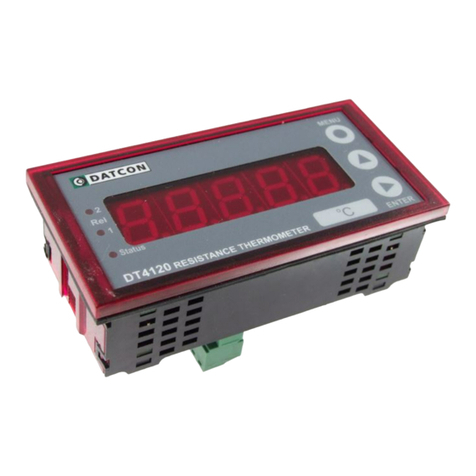
Datcon
Datcon DT4120 Series User manual
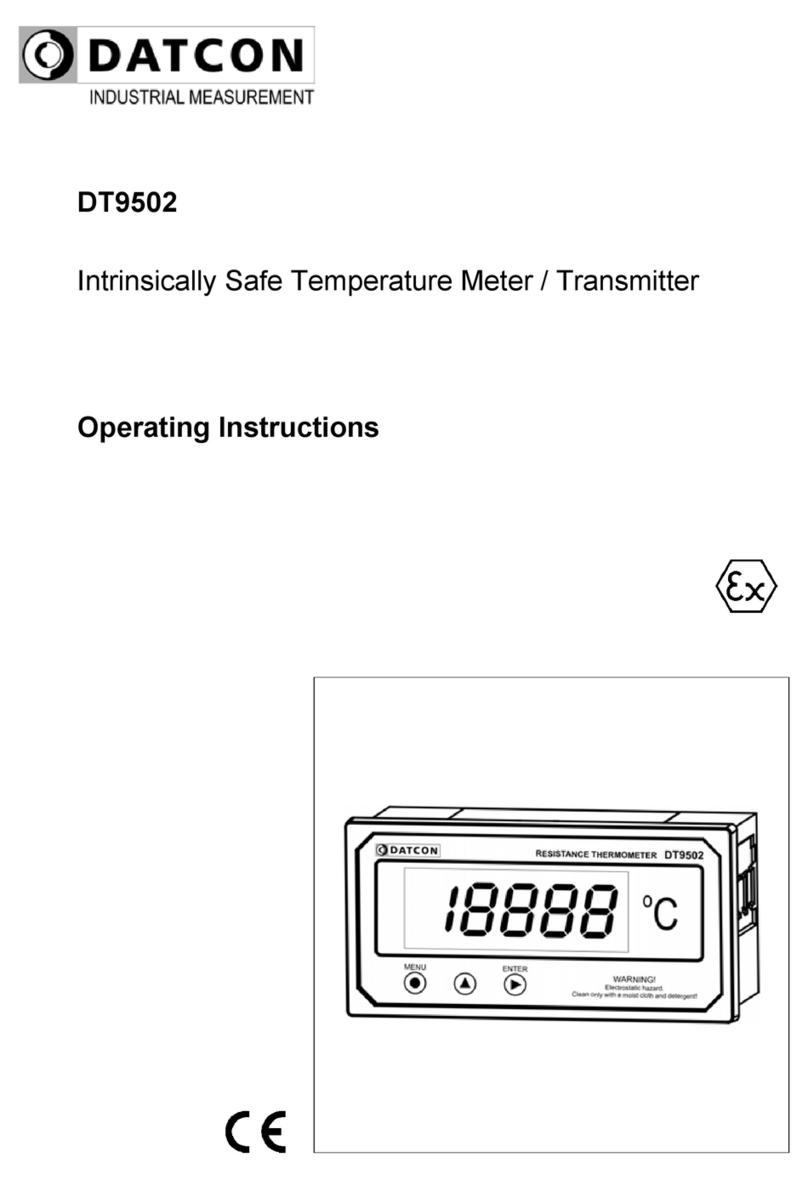
Datcon
Datcon DT9502 User manual
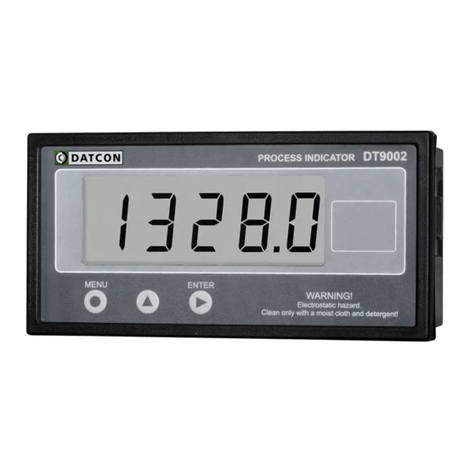
Datcon
Datcon DT9002 User manual
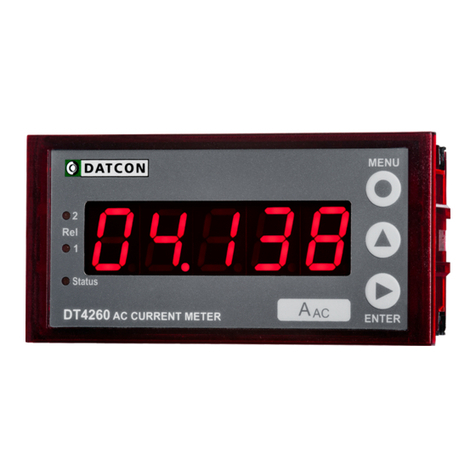
Datcon
Datcon DT4260 Series User manual
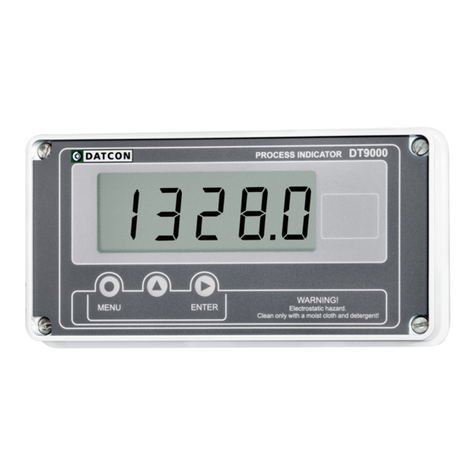
Datcon
Datcon DT9000 User manual
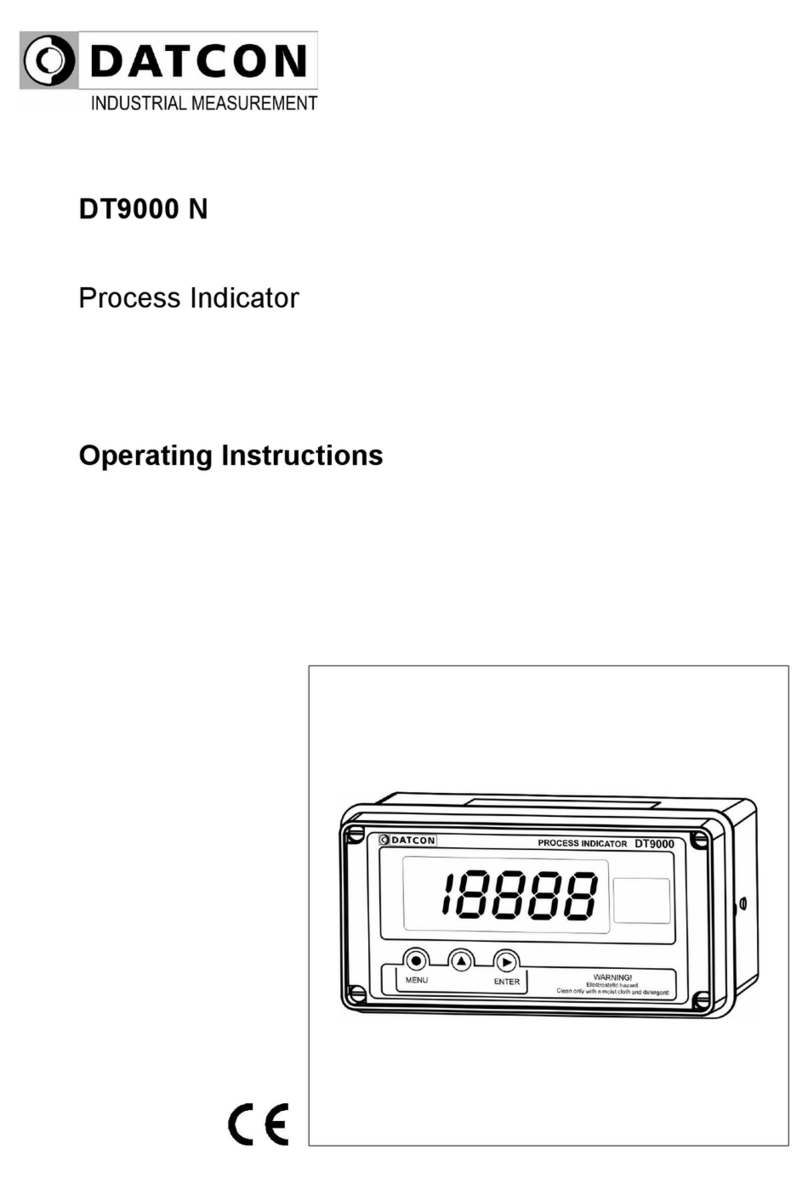
Datcon
Datcon DT9000 N User manual
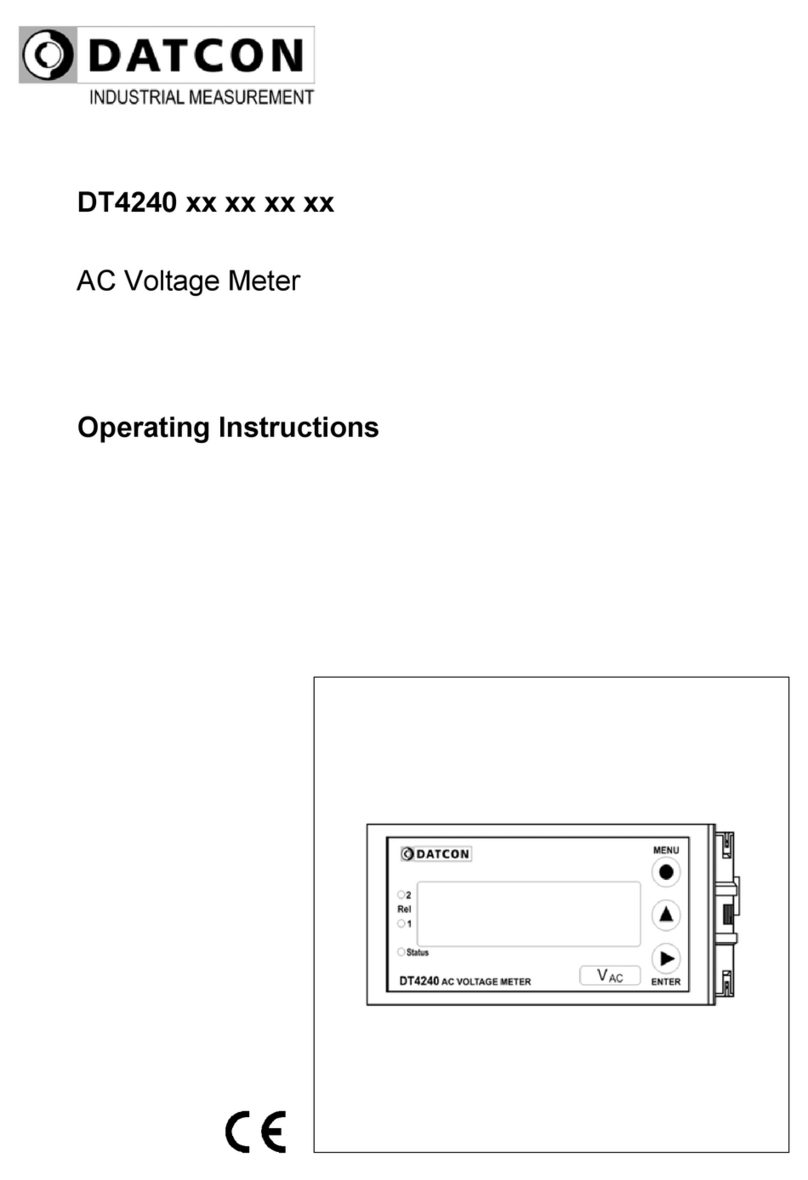
Datcon
Datcon DT4240 Series User manual

Datcon
Datcon PQRM5300 33 U I Series User manual
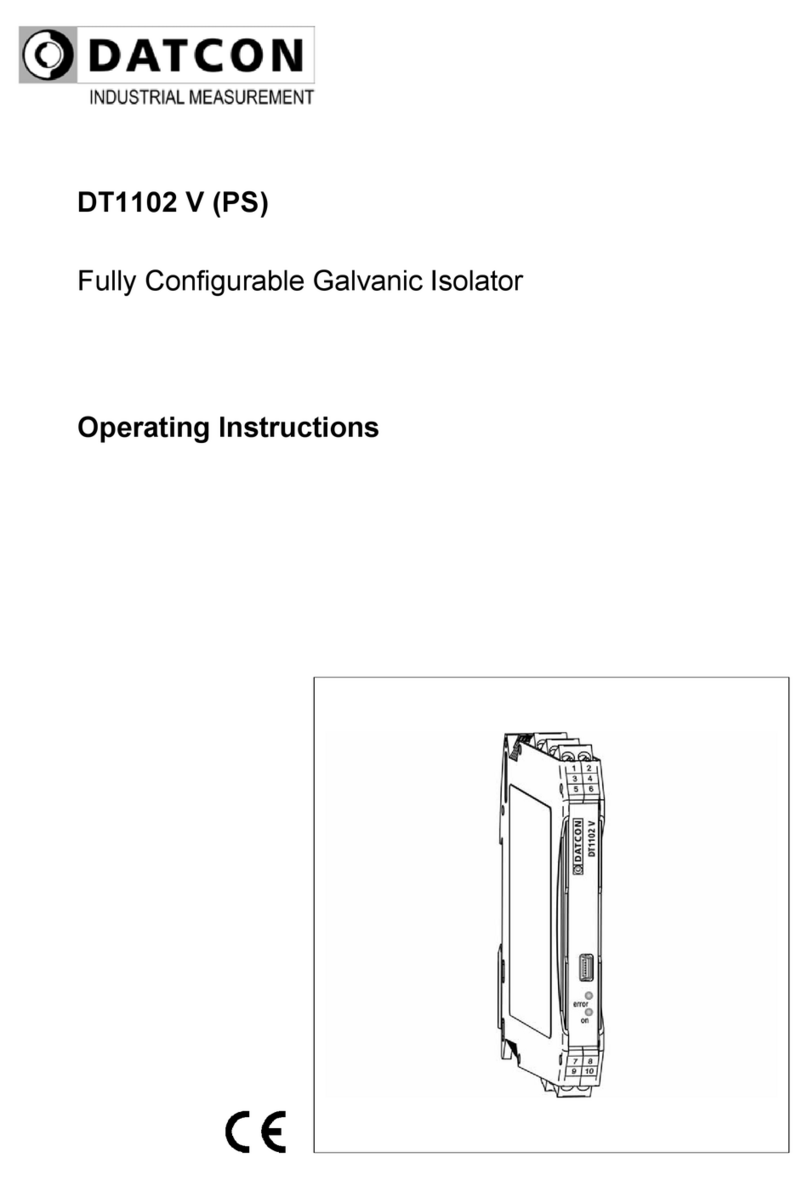
Datcon
Datcon DT1102 V User manual
